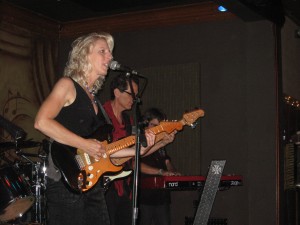When I was focusing on learning to write short fiction and took several writing workshops, the writer-teachers often expressed dismay that aspiring writers didn’t read enough good fiction. How could one learn to write without reading a lot?, they wondered.
If you’ve ever spent any time around young children, you know that one of their primary paths to learning is imitation. They pay keen attention to what’s going on around them and soak up every detail. It seems natural for them to “practice” the behaviors and activities they see adults doing–until they can do them as well.
Adults who want to learn any art form or creative activity would do well to remember the example of children. Instructional media, teachers and classes contribute to learning, but a key element is paying attention to good examples of the art one seeks to master.
Just as aspiring writers need to read, study and deeply experience good writing, so do aspiring musicians need to listen widely and deeply to the music they care about. Since I started taking guitar lessons, I’ve listened to music much more often than I used to–even though I’ve always enjoyed and loved music. Listening to music, especially blues by the masters, nurtures and encourages my love of the music and also helps me learn to play the music better.
Now that I’ve learned to play a little, I hear music in a different way. The more I know how to play, the more I can hear in the music I listen to. At the same time, I’m also trying to hear new things. What is that riff? How is the guitarist playing that passage? Could I play that?
My teacher has had me do Music Listening Analyses to encourage me to focus on certain elements in a song. In the process, I’ve listened to songs over and over. There is always more to hear. Even a relatively “simple” song has so much going on in it that it requires multiple listenings to absorb it deeply.
Whether listening for an analysis or just listening, it’s important to pay attention to the feel of the music. Music isn’t an intellectual exercise, nor is it just a matter of good technique. The ultimate goal is for “technique” to fall below a conscious level and simply play out the feelings.
Since I started taking lessons, I’ve also gone to hear live music more often. I find it helpful to see what a guitarist is doing as I’m hearing the music. However, I often can’t tell what is going on even as I’m looking, because it happens too fast.
Before I took guitar lessons, I hadn’t given any thought to ear training, but it’s obviously as important to playing music as finger training. Fortunately, listening to music I enjoy is never an onerous assignment.
In a sense, listening to music is also a form of goal-setting. I don’t expect ever to play at the level of blues mentors like Albert Collins, John Lee Hooker or Hubert Sumlin. However, as I sail over the wide seas of music, they are like the North Star, a point of orientation that guides me and keeps me on track.
